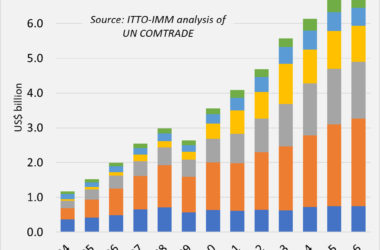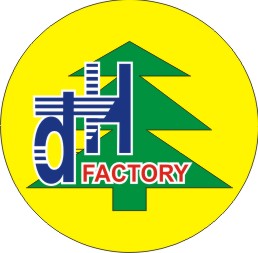Seeking a system to help it satisfy EU regulations, the government agency recently completed a project using EPC Gen 2 tags to track the movement of logs through the supply chain.
Nov. 2, 2009—The Forestry Department of Peninsular Malaysia (FDPM) recently completed a trial of timber tracking and forest management using radio frequency identification. The nation is one of the largest exporters of wood resources in the world, with timber and timber products contributing RM22.5 billion (US$6.3 billion) of exports in 2008.
Malaysia and the European Union (EU) are currently negotiating a voluntary partnership agreement based on EU-issued regulations for the production of logs and wood products. The EU wants countries that export wood products to adhere to a set of rules providing guarantees that the trees used to make those products were harvested legally, and in an environmentally sustainable manner. The European Union also wants control and monitoring processes to be transparent. Once those controls and processes are put into place, the Malaysian government will be able to issue export licenses that meet EU standards while combating illegal logging. One requirement of the agreement is a national timber-tracking system to improve transparency and traceability in the timber supply chain.
 |
| A forestry department employee reads the RFID tags of a felled tree. |
In Peninsular Malaysia, the inventory of trees is currently performed manually, by reading identification numbers written on markers attached to the trees. It is difficult to trace individual pieces of sawn wood using the system, and practically impossible to go through the paperwork for the whole supply chain in order to guarantee all taxes have been paid, and that the original tree was legally harvested. An automated system, it was determined, would be able to meet such demands. Therefore, the FDPM invited a number of technology suppliers to test both RFID-based and bar-code-based forest-management systems. Tracking software supplier Helveta was the only company to complete the first phase of the pilot, using an RFID field implementation, after the firm was appointed work with the Terengganu State Forestry Department (TSFD) on a 129,143-hectare (319-acre) concession.
The purpose of the pilot was to demonstrate an RFID-based system flexible enough to meet the legal requirements in the field, says Nigel Dore, Helveta’s chief technology officer. “The system was configured to support the inventory of resources pre-harvesting, gather information on harvesting, and capture data at cross-cutting the tree into logs, at the main log yard, on logs being shipped out of the concession, and at a TSFD checkpoint outside the concession,” he explains.
All trees tracked through the chain of custody were tagged using one of two passive ultrahigh-frequency (UHF) tags compliant with the EPCGen 2 and ISO 18000-6C standards. The tags were selected based on availability and form-factor criteria. One tag operated at a frequency of 860 to 960 MHz, the other at 865 to 869 MHz.
RFID tags were either stapled to a tree or log, or nailed in with a hammer, to determine the best method of attachment. None of the tags were damaged during the process, despite the fact that they lacked special protective coverings. Four RFID-enabledTeklogix Workabout handheld computers, running Helveta’s CI Mobile data-capture software, were used in the field to read a unique ID reference number encoded to eachtag. From there, RFID-enabled Workabout devices were utilized to confirm the ID number at the various checkpoints along the supply chain as trees were felled, and as logs were processed.
Source: rfidjournal.com


































